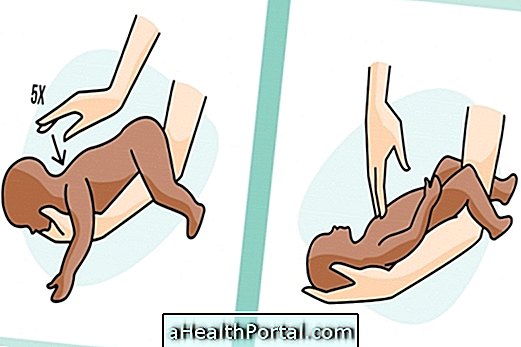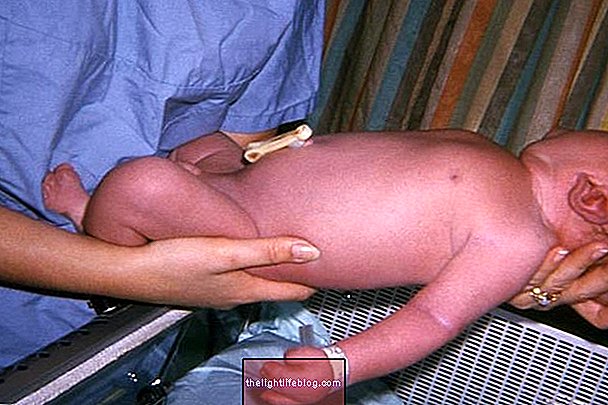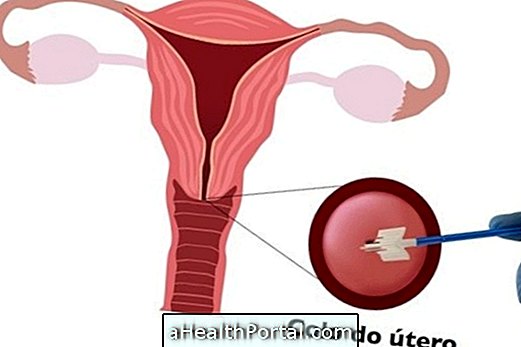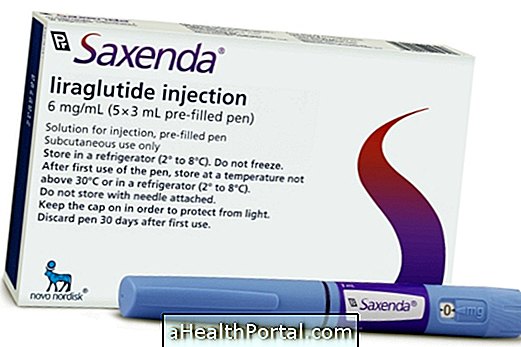Surgical risk is a way of assessing the clinical status and health conditions of the person who will undergo surgery, so that risks of complications are identified throughout the period before, during and after surgery.
It is calculated through the physician's clinical evaluation and the ordering of some tests, but, to make it easier, there are also some protocols that better guide medical reasoning, such as ASA, Lee and ACP, for example.
Any doctor can make this assessment, but it is usually done by the general practitioner, cardiologist or anesthetist. In this way, it is possible that some particular care is taken for each person before the procedure, such as requesting more appropriate tests or carrying out treatments to reduce the risk.

How the preoperative evaluation is done
The medical evaluation done before the surgery is very important to better define what type of surgery each person can or cannot do, and to determine if the risks outweigh the benefits. The evaluation involves:
1. Conducting the clinical examination
The clinical examination is done with the collection of data on the person, such as medications in use, symptoms, illnesses that they have, in addition to physical assessment, such as cardiac and pulmonary auscultation.
From the clinical evaluation, it is possible to obtain the first form of risk classification, created by the American Society of Anesthesiologists, known as ASA:
- ASA 1: healthy person, without systemic diseases, infections or fever;
- ASA 2: person with mild systemic disease, such as controlled high blood pressure, controlled diabetes, obesity, age over 80 years;
- ASA 3: person with severe but not disabling systemic disease, such as compensated heart failure, heart attack for more than 6 months, cardiac angina, arrhythmia, cirrhosis, decompensated diabetes or hypertension;
- ASA 4: person with a life-threatening, disabling systemic disease, such as severe heart failure, heart attack for less than 6 months, insufficiency of the lungs, liver and kidneys;
- ASA 5: terminally ill person, with no expectation of surviving for more than 24 hours, as after an accident;
- ASA 6: person with brain death detected, who will undergo surgery for organ donation.
The higher the number of ASA classification, the greater the risk of mortality and complications from surgery, and one must carefully evaluate what type of surgery may be worthwhile and beneficial to the person.
2. Evaluation of the type of surgery
Understanding the type of surgical procedure that will be performed is also very important, because the more complex and time-consuming the surgery, the greater the risks that the person may suffer and the care that must be taken.
Thus, the types of surgery can be classified according to the risk of cardiac complications, such as:
Endoscopic procedures, such as endoscopy, colonoscopy;
Superficial surgeries, such as skin, breast, eyes.
Surgery of the chest, abdomen or prostate;
Head or neck surgery;
Orthopedic surgeries, such as after fracture;
Correction of abdominal aortic aneurysms or removal of carotid thrombi.
Major emergency surgeries.
Surgeries of large blood vessels, such as aorta or carotid artery, for example.
3. Assessment of cardiac risk
There are some algorithms that more practically measure the risk of complications and death in non-cardiac surgery, when investigating the person's clinical situation and some tests.
Some examples of algorithms used are Goldman's Heart Risk Index, Lee's Revised Heart Risk Index and American College of Cardiology (ACP), for example. To calculate the risk, they consider some data of the person, such as:
- Age, who is most at risk above 70 years of age;
- History of myocardial infarction;
- History of chest pain or angina;
- Presence of arrhythmia or narrowing of vessels;
- Low blood oxygenation;
- Presence of diabetes;
- Presence of heart failure;
- Presence of lung edema;
- Type of surgery.
From the data obtained, it is possible to determine the surgical risk. Thus, if it is low, it is possible to release the surgery, since if the surgical risk is medium to high, the doctor may provide guidance, adjust the type of surgery or request more tests that help to better assess the person's surgical risk.

4. Conducting necessary exams
Preoperative exams should be done with the aim of investigating any changes, if there is a suspicion, which can lead to a surgical complication. Therefore, the same tests should not be ordered for everyone, as there is no evidence that this will help to reduce complications. For example, in people without symptoms, with low surgical risk and who will undergo low-risk surgery, it is not necessary to perform tests.
However, some of the most commonly requested and recommended tests are:
- CBC: people who have an intermediate or high-risk surgery, with a history of anemia, with current suspicion or with diseases that can cause changes in blood cells;
- Coagulation tests: people using anticoagulants, liver failure, history of diseases that cause bleeding, intermediate or high risk surgeries;
- Creatinine dosage: patients with kidney disease, diabetes, high blood pressure, liver disease, heart failure;
- Chest radiography: people with diseases such as emphysema, heart disease, older than 60 years, people at high heart risk, with multiple diseases or who will undergo surgery on the chest or abdomen;
- Electrocardiogram: people with suspected cardiovascular disease, history of chest pain and diabetics.
Generally, these tests are valid for 12 months, with no need for repetition in this period, however, in some cases, the doctor may find it necessary to repeat them beforehand. In addition, some doctors may also consider it important to order these tests even for people without suspected changes.
Other tests, such as stress test, echocardiogram or holter, for example, may be ordered for some more complex types of surgery or for people with suspected heart disease.
5. Making preoperative adjustments
After performing the tests and exams, the doctor can schedule the surgery, if all is well, or he can give guidelines so that the risk of complications in the surgery is reduced as much as possible.
That way, he can recommend doing other more specific tests, adjusting the dose or introducing some medication, assessing the need for correction of the heart function, through cardiac surgery, for example, guiding some physical activity, weight loss or stopping smoking, among others.
Was this information helpful?
Yes No
Your opinion is important! Write here how we can improve our text:
Any questions? Click here to be answered.
Email in which you want to receive a reply:
Check the confirmation email we sent you.
Your name:
Reason for visit:
--- Choose your reason --- DiseaseLive betterHelp another personGain knowledge
Are you a health professional?
NoMedicalPharmaceuticalsNurseNutritionistBiomedicalPhysiotherapistBeauticianOther

.jpg)
-principais-causas-e-tratamento.jpg)





















